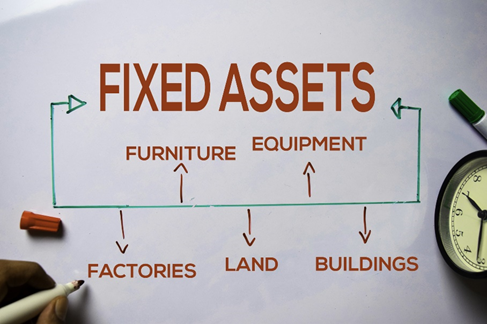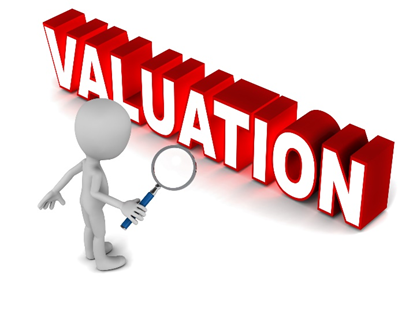What Are Capital Assets?
A capital asset is an asset that will benefit the company for a long time, usually more than a year and costs more than the typical day-to-day operating costs. A capital asset may be a piece of machinery or financial investment. Fixed assets is another term for capital assets. Capital assets may be tangible or intangible. Stocks that pay annual dividends are classified as capital assets. The annual pay-out is treated as a capital gain and is charged accordingly. On the other hand, any losses are called capital losses and can even provide a tax benefit.
Summary
- A capital asset is an asset that will benefit the company for a long time. It may be a piece of machinery or financial investment.
- The commodity is not readily convertible to cash and is not expected to be traded as part of usual business activities.
- Asset valuation, calculates the present market value of a company's assets as displayed on the balance sheet using widely recognised accounting principles..
Frequently Asked Questions (FAQs)
What are the features of capital assets?
The following features often characterise capital assets:
• The commodity has more than one-year estimated useful period.
• The asset's purchase cost exceeds a fixed business minimum number, often referred to as a capitalisation maximum.
• The commodity is not readily convertible to cash and is not expected to be traded as part of usual business activities.
• A capital asset is classified differently for tax purposes. While the above description applies to a general description of a capital asset, what one corporation considers a capital asset does not count for tax purposes.
What are the types of capital assets?
Capital assets may be classified as long term and short term capital assets-
A short-term capital asset is owned for longer than 36 months. In contrast, a long-term capital asset has been kept for more than three years, two years or one year, as the case may be, immediately before the transition date.

Fixed Assets Examples ID 157785845 © Olandah23 | Megapixl.com
How is the valuation of capital assets done by firms?
Asset valuation, calculates the present market value of a company's assets as displayed on the balance sheet using widely recognised accounting principles. An auditor's responsibility is to perform an accurate asset valuation and asset verification, and this valuation is based on the asset's utility after depreciation.
Fixed assets can be valued using a variety of approaches, including the ones mentioned below:
• Market Valuation Method
The first method involves locating similar publicly traded firms, comparing price/earnings ratios and other valuation metrics, calculating an average, and applying it to the subject business. The second method of market valuation is close to using real estate comparable. This valuation method is based on a sales comparison of similar assets, and it determines total cash value by looking at recent sales or offering rates of similar businesses.
This method has several disadvantages. In some instances, the market isn't active enough to provide sales data, and there aren't enough trustworthy outlets to provide independent value verification. For these purposes, the market valuation approach will provide valuable information about the prevailing market rates for a similar business at a given time. Still, it will always fall short of determining the company's true fair value. This strategy is occasionally used as a merger and acquisition (M&A) valuation technique.
• Cost Valuation Method
The cost method is based on the substitution principle: cautious buyers would not pay more for a property than they would for its close substitute. The cost approach to valuation considers reproduction cost and replacement cost. Reproduction cost is cost estimation, at current prices, of creating a replica of the concerned asset whilst covering up for the shortcomings of the existing asset. The cost of replacing an existing property with a new one of equal utility as of a given date is known as replacement cost.
• Income Valuation Method
According to this method, the current total cash value of a property is equal to the present value of potential cash flows it will provide for its remaining economic existence. This method necessitates a great deal of research and study. Since it depends on so many assumptions, the income valuation approach has the highest risk that the model will be incorrect. However, the time and effort to use the income method also results in a more accurate appraisal, particularly when combined with other methods. This method can be used to forecast value based on various scenarios and to conduct a sensitivity analysis.

Valuation ID 30647516 © Artistashmita | Megapixl.com
When deciding the type or types of valuation to use for a particular case, many factors must be considered, including the purpose for the valuation, the market, and the characteristics of the specific company. To arrive at a defensible value, a combination of valuation analysis methods is needed.
What effects do capital assets have on financial statements?
A capital asset is typically held because of its contribution to the ability of a company to earn profit. Furthermore, it is estimated that the asset's gains would last longer than a year. The land, factory, machinery on a company's balance sheet represents capital assets.
The purchase, value decline and sale of capital assets impact the financial statements of the firm. Depreciation cost does not immediately impact income statements in the year of acquisition, but it does affect income statements for each following year for the asset's estimated useful life. If an asset is damaged, the asset's fair value decreases, necessitating an adjustment by the assessee to the balance sheet's book value. A loss will have to be reported on the income statement. When a capital asset is sold, the proceeds from the sale is reflected in the financial statements, and the asset is removed from the records.
In worst-case cases, such as when a corporation goes through a merger or enters bankruptcy, a company can liquidate these properties. A company may sell its capital assets for other situations, such as expanding and requiring a larger facility. A company could, for example, sell one property and purchase a larger one in a better position.
Businesses may get rid of their capital assets by selling, exchanging, abandoning, or losing them in foreclosure. Condemnation may be considered a disposition in some cases. When a company owns an asset for more than a year, it either has a capital gain or loss from the sale.
Damaged or expired capital assets are also possible. When an asset is compromised, its market value declines, resulting in a change in the balance sheet's book value. If the carrying value reaches the recoverable amount, the disparity is known as a disability cost in the year.
 Please wait processing your request...
Please wait processing your request...